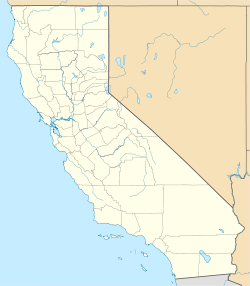It is proposed that this article be deleted because of the following concern:
If you can address this concern by improving, copyediting, sourcing, renaming, or merging the page, please edit this page and do so. You may remove this message if you improve the article or otherwise object to deletion for any reason. Although not required, you are encouraged to explain why you object to the deletion, either in your edit summary or on the talk page. If this template is removed, do not replace it . The article may be deleted if this message remains in place for seven days, i.e., after 21:50, 18 August 2025 (UTC). Find sources: "Cushenbury, California" – news · newspapers · books · scholar · JSTOR |
This article relies largely or entirely on a single source .(April 2021) |
Cushenbury | |
|---|---|
| Coordinates: 34°21′14″N116°51′30″W / 34.35389°N 116.85833°W | |
| Country | United States |
| State | California |
| County | San Bernardino |
| Elevation | 4,311 ft (1,314 m) |
| Time zone | UTC-8 (Pacific (PST)) |
| • Summer (DST) | UTC-7 (PDT) |
| ZIP codes | 92356 |
| Area codes | 442/760 |
| GNIS feature ID | 1660528 |
Cushenbury, California is an unincorporated place in San Bernardino County, California. It is located at the end of the Burlington Northern Santa Fe's Cushenbury Branch, and is 9 miles southeast of Lucerne Valley. The settlement is the site of a cement plant, opened by Kaiser Steel in 1957 and today run by the Mitsubishi Corporation. It lends its name to the Cushenbury milkvetch, the common name of Astragalus albens .


